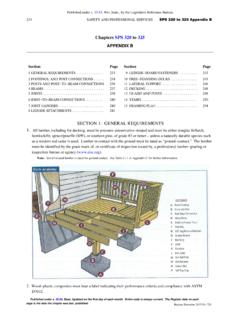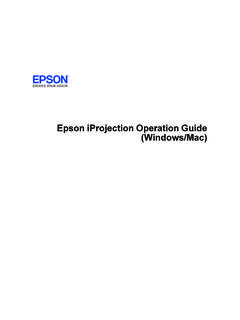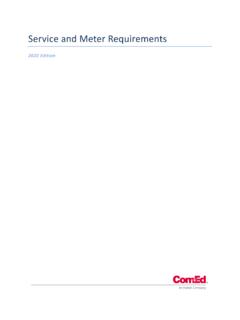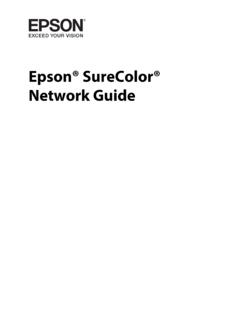Transcription of ATTENTION! READ BEFORE INSTALLING! - USFloors
1 COREtec Plus Engineered Luxury Vinyl Plank & Tile Installations Instructions attention ! read BEFORE installing ! FOR BEST VISUAL REPRESENTATION OF YOUR FLOOR. This flooring replicates the look of a natural product which has natural variations in color, texture, and sheen/gloss. For best visual effect, shuffle planks or tiles from several cartons and do not install similar planks or tiles next to one another. SUBFLOOR PREPARATION. Subfloor should be dry and level to 3/16 per 10 ft. radius for best installation results. COREtec Plus Engineered Luxury Vinyl Plank & Tile Installation Instructions read THESE INSTRUCTIONS THOROUGHLY BEFORE BEGINNING INSTALLATION. If the following instructions leave any unanswered questions or if additional information is required, please call USFloors toll free at 800-404-2675 (706-733-6120). FLOORING MATERIAL SHOULD BE INSPECTED PRIOR TO INSTALLATION. Responsibility for the suitability of USFloors flooring and accompanying products for each individual installation cannot be assumed by USFloors , since USFloors has no control over the installer's proper application.
2 Should an individual plank or tile be doubtful as to appearance or dimension the installer should not use this piece. USFloors will send replacement in a timely fashion. NOTE: USFloors COREtec Plus floors may be installed with a direct glue-down method on approved wooden (or) concrete substrates that are on, above, or below grade. Use only USFloors Wood and Bamboo Flooring Adhesive (or) comparable premium wood flooring adhesives. Please consult with adhesive manufacturer to determine if suitable for use with this material. read BEFORE installing : While COREtec Plus is waterproof, it's not a moisture barrier. It's still a good idea to make sure your concrete is cured and tested for moisture, and that a moisture barrier is installed in the crawl space and even under a COREtec Plus floor over a concrete subfloor. Moisture won't damage COREtec Plus, but it can get in the walls and structure of the home. A couple of extra dollars and a few extra minutes is a small investment for the added protection and peace of mind.
3 Because houses and buildings, as well as adjacent hardwood or laminate floors, expand and contract, USFloors recommends to leave a expansion gap between the perimeter walls and any adjacent hardwood floor. Use good common sense installation practices, and you'll have a successful installation that results in a beautiful floor. PRE-INSTALLATION JOBSITE REQUIREMENTS. USFloors cannot be held responsible for site conditions. Carefully examine the flooring prior to installation for color, finish, sheen, and quality. Ensure adequate lighting for proper inspection. If flooring is not acceptable, contact your supplier immediately and arrange for replacement. USFloors cannot accept responsibility for flooring installed with visible defects. Prior to installation of any flooring, the installer must ensure that the jobsite and subfloor meet the requirements of these instructions. USFloors is not responsible for flooring failure resulting from unsatisfactory jobsite and/or subfloor conditions.
4 Flooring should be one of the last items installed in any new construction or remodel project. Crawl spaces must be a minimum of 18 (46 cm) from the ground to the underside of the joists. A ground cover of 6 20 mil black polyethylene film is essential as a vapor barrier with joints lapped 6 (15 cm) and sealed with moisture resistant tape. The crawl space should have perimeter venting equal to a minimum of of the crawl space square footage. These vents should be properly located to foster cross ventilation. Where necessary, local regulations prevail. Room temperature and humidity of installation area should be consistent with normal, year-round living conditions for at least one week o BEFORE installation of flooring. Maintaining an optimum room temperature of 70 F and a humidity range of 30-50% is recommended. 3580 Corporate Dr. | Dalton, GA 30720 USA. Phone: 800-404-2675 | Fax: 706-733-8120 | PRE-INSTALLATION SUBFLOOR REQUIREMENTS.
5 All Subfloors must be: Dry Structurally sound Clean: Thoroughly swept and free of all debris Level: Flat to 3/16 per 10-foot radius Wood subfloors must be dry and well secured. Nail or screw every 6 along joists to avoid squeaking. If not level, sand down high spots and fill low spots with a Portland Based leveling patch. Concrete subfloors must be fully cured, at least 60 days old, and should have minimum 6-mil polyfilm between concrete and ground. Subfloor should be flat and level within 3/16 per 10' radius. If necessary grind high spots down and level low spots with a Portland leveling compound. Ceramic Tile, resilient tile and sheet vinyl must be well-bonded to subfloor, in good condition, clean and level. Do not sand existing vinyl floors, as they may contain asbestos. INSTALLATION TOOLS. For all installation methods: Tape measure Pencil Chalk line Crosscut power saw 3M Scotch-Blue 2080 Tape Rubber mallet spacers Acceptable subfloor types: CDX Underlayment Grade Plywood (at least thick).
6 Underlayment grade particleboard OSB (at least thick). Concrete slab Existing wood or laminate floor Ceramic tile Resilient tile & sheet vinyl STARTING YOUR INSTALLATION. Because houses and buildings, as well as adjacent hardwood or laminate floors, expand and contract, USFloors recommends to leave a expansion gap between the perimeter walls and any adjacent hardwood floor. Work from several open boxes of flooring and dry lay the floor BEFORE permanently laying the floor. This will allow you to select the varying textures, colors, and sheens, and to arrange them in a harmonious pattern. Remember, it is the installers' responsibility to determine the expectations of what the finished floor will look like with the end user first and then to cull out pieces that do not meet those expectations. Begin installation next to an outside wall. This is usually the straightest and best reference for establishing a straight working line. Establish this line by measuring an equal distance from the wall at both ends and snapping a chalk line.
7 The distance you measure from the wall should be the width of a plank or tile. You may need to scribe cut the first row of planks or tiles to match the wall in order to make a straight working line if the wall is out of straight. You may want to position a few rows BEFORE starting installation to confirm your layout decision and working line. When laying flooring, stagger end joints from row to row by at least 8 (20 cm) for planks, and equal to 12 (51 cm or a half piece) for tiles. For plank installations, when cutting the last plank in a row to fit, you can use the cut-off end to begin the next row. If cut-off end is less than 8 , discard it and instead cut a new plank at a random length (at least 8 in length) and use it to start the next row. For tile installations, always begin a row with either a full tile or a half tile so that the joints are consistently staggered in a brick work type pattern. Always begin each row from the same side of the room.
8 COREtec Plus Installation Instructions Page 2 of 4 Revised 8/13/13. INSTALLATION INSTRUCTIONS. Inspection: Prior to installation, inspect material in daylight for visible faults/damage. Check if subfloor/site conditions comply with the specifications described in these instructions. If you are not satisfied do not install, and contact your supplier. BEFORE laying: Measure the room at right angle to the direction of the flooring. For best visual effect, planks or tiles in the final row should be at least at least 1/3 the width of the plank or tile. For this purpose, planks or tiles in the first row can be cut to smaller size. Shuffle boards in order to obtain a pleasant blend of shades. Lay boards, Figure 1. preferably following the direction of the main source of light. We recommend laying on wooden floors crossways to the existing floorboards. installing THE FIRST ROW: 1. Starting from the left with the tongue-side facing the wall, carefully place the first board in place, using spacers to leave a expansion gap between wall and edges of the plank or tile.
9 (Figure 1). 2. Align the next piece by overlapping the end of the first board. Tap the joint with the rubber mallet using a downward angle striking motion towards the adjoining plank or tile (Figure 5) until the tongue and groove lock together to secure the joint on the ends. Continue in this manner until reaching the final board in the Figure 2. first row. 3. Cut the final board piece to length. CONTINUING THE INSTALLATION: 1. For tile installations, begin the second row with a half tile. For plank installations, if the cut plank is at least 8 in length, use it to begin the second row. If the cut plank is shorter than 8 do not use it. Instead, begin with a new board that is at least 8 in length and allows 8 between the end joints on the adjacent Figure 3. planks. End joint spacing for tiles should always be equal to 12 or a half tile. 2. Position the first board in place by angling it up slightly, pushing forward and interlocking the side tongue.
10 (Figure 2) The long side of the plank or tile MUST BE SNUG against the adjoining plank or tile with NO. GAPPING. There will be a slight click if the long side is fully engaged when lowered into place. 3. Lower the board (Figure 3) and slide it to the left to within approximately 1 mm of the end joint of the (1mm). adjoining plank or tile. (Figure 4). 4. Tap the joint with the rubber mallet using a downward angle striking motion towards the adjoining end joint (Figure 5) until the tongue and groove lock together on the side and ends. 5. Carefully inspect the long edge and short ends of the plank or tile for any gapping BEFORE moving Figure 4. on to the next tile. If you notice a gap, STOP, and reinstall the board to ensure a snug fit. 6. Install the remaining boards and rows in the same manner. (Figures 2-5). 7. Cut the last board to size. 8. Whenever practical, use cut pieces from previous rows as the starter board to reduce waste.




